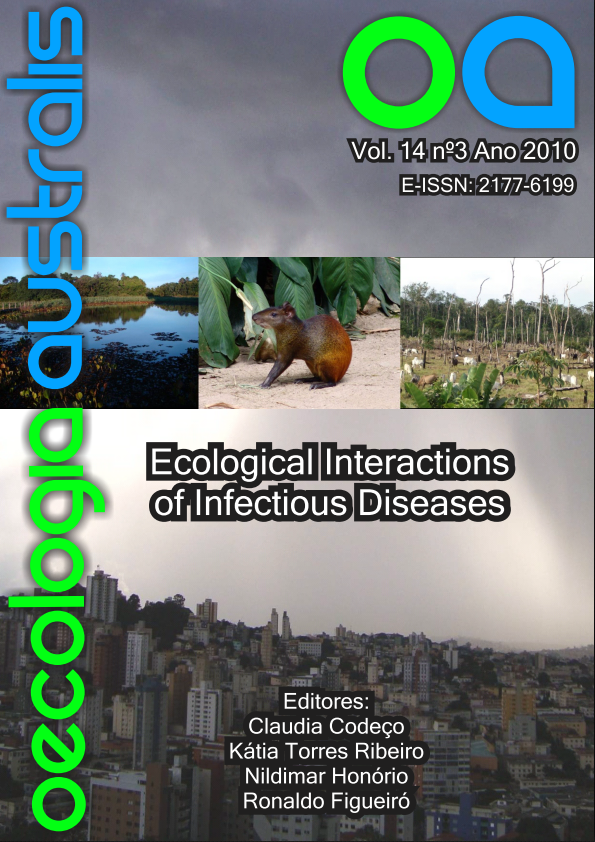A REVIEW ON THE ECOLOGICAL DETERMINANTS OF AEDES AEGYPTI (DIPTERA: CULICIDAE) VECTORIAL CAPACITY
Keywords:
Dengue, yellow fever, disease transmission, dispersal.Abstract
Dengue is a re-emerging infectious disease that infects more than 50 million people annually. Since there are no antiviral drugs or vaccine to disrupt transmission, the most recommended tool for reducing dengue epidemics intensity is focused on intensify control efforts on its vector, the yellow fever mosquito Aedes aegypti. In order to better understand vector biology and its impact on disease transmission, a known concept in entomology and epidemiology is vectorial capacity, which refers to the ability of a mosquito to transmit a given pathogen. The variation of several aspects of mosquito biology, such as its survival, vectorial competence and biting rates can change the intensity of dengue transmission. In this review, the parameters used for composing the vectorial capacity formulae were detailed one by one, with a critical point of view of their estimation and usefulness to medical entomology.


